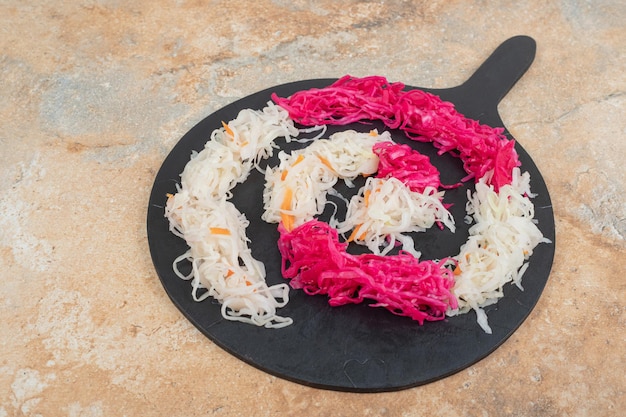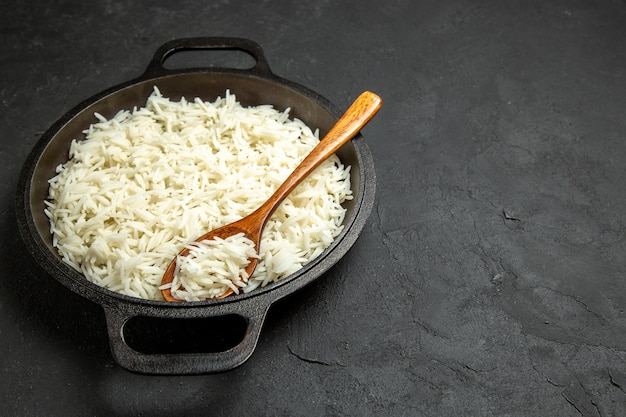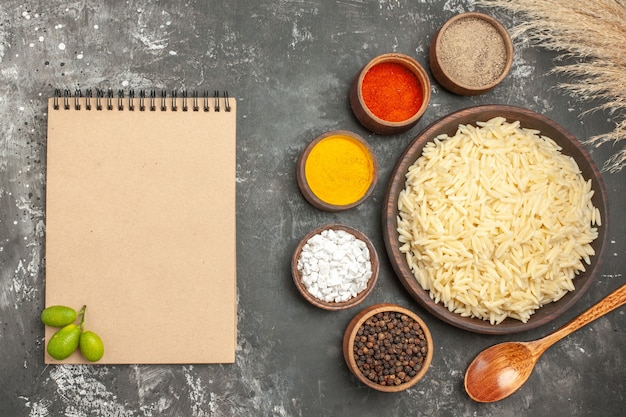There's a certain magic in a perfectly cooked pot of basmati rice. It's more than just a side dish; it's a symphony of fluffy grains, delicate aroma, and a subtle sheen – a culinary masterpiece that elevates any meal. But let's be honest, getting it right can feel like a culinary puzzle. It's easy to end up with mushy, sticky rice that just doesn't quite hit the mark.
Over the years, I've learned a thing or two about this fragrant rice. From my early student days of culinary disasters to now, I've discovered the secrets to consistently achieving that fluffy, aromatic masterpiece. So, get ready to transform your rice game. This isn't just a recipe; it's a journey into the world of perfect basmati rice.
Part 1: Understanding the Basics

Let's start by getting acquainted with the star of the show: basmati rice. This long-grained wonder hails from India and Pakistan, where it's been a cherished staple for centuries. Its reputation isn't just about its elegant, slender grains; it's about a captivating aroma, a subtle sweetness, and a texture that's light and airy, perfect for absorbing the flavors of your favorite dishes.
Why Basmati?
There are plenty of rice varieties out there, but basmati truly stands out. It's the culinary equivalent of a blank canvas, ready to be transformed by your culinary creativity. Here's why it's so special:
- Aroma: Basmati rice is renowned for its unique, intoxicating fragrance. It's a blend of floral and nutty notes that instantly transports you to bustling Indian markets or fragrant kitchens. It's a sensory experience that adds a whole new dimension to your meal.
- Texture: The long grains cook up fluffy and separate, with a light, airy texture that's the opposite of those sticky, clumpy rice varieties. This makes it the perfect side dish for curries, stir-fries, or even a simple salad.
- Taste: Basmati rice has a delicate sweetness that complements a wide range of cuisines. It's not overpowering, allowing the other flavors of your dish to shine through.
Choosing the Right Basmati
Not all basmati rice is created equal. Just like you wouldn't settle for a bland bottle of wine, you need to be a discerning shopper when it comes to this aromatic rice. Here's what to keep in mind:
- Age: Look for basmati rice that's been aged for at least a year. This aging process allows the starches to break down, resulting in a fluffier, lighter texture. You'll be thanking your past self for choosing that aged rice.
- Fragrance: Before you even reach for the bag, take a sniff. It should have a captivating, floral aroma. If it smells bland or stale, it's a good sign that it's not the right choice.
- Origin: Authentic basmati rice comes from India or Pakistan. Look for packaging that clearly states its origin. It's a small detail, but it makes a difference.
Storing Your Rice
Once you've found that perfect bag of basmati, it's crucial to store it correctly to preserve its quality and prevent any unwanted aromas from sneaking in. Here's how to keep your rice happy:
- Airtight Container: Store your rice in an airtight container – glass jars are a great option, as they allow you to see how much rice you have left. This prevents moisture absorption and unwanted aromas, keeping your rice fresh and flavorful.
- Cool, Dry Place: Avoid storing your rice in direct sunlight or near heat sources. A cool, dry pantry is ideal. The key is to keep it away from anything that could potentially affect its aroma or texture.
- Refrigeration: If you want to store your rice for a longer period (up to six months), the fridge is your best bet. Just make sure it's in an airtight container to keep it from absorbing moisture.
Part 2: The Art of Washing

Before we even think about cooking, there's a crucial step that often gets overlooked: washing the rice. It might seem like a simple rinse, but it's absolutely essential for achieving that perfect fluffy texture.
Why Wash?
washing basmati rice is like giving it a little spa treatment before you cook it. It's not just about removing dust or debris; it's about enhancing its texture and flavour. Here's why:
- Removes Excess Starch: Basmati rice contains starch, and if you don't wash it properly, that starch can cause your rice to become sticky and clumpy when cooked. Washing removes this excess starch, resulting in light, fluffy grains that are a joy to eat.
- Rinses Away Impurities: Rice can sometimes contain dust, debris, or even small stones. Washing removes these impurities, ensuring that your rice is clean and safe to eat. It's a simple step that makes a big difference in the quality of your final dish.
- Enhances Flavour: Some believe that washing helps remove a slightly starchy flavour, allowing the subtle sweetness of the basmati to shine through. Whether it's true or not, a good wash can't hurt, and it can definitely contribute to a more flavorful experience.
How to Wash Like a Pro
Washing basmati rice is a simple process, but there are a few tricks to getting it right. Follow these steps for the best results:
- Measure Your Rice: Start by measuring the amount of rice you need. A good rule of thumb is to use a 1:2 ratio of rice to water (for every 1 cup of rice, use 2 cups of water). But don't be afraid to experiment slightly; the perfect ratio can vary depending on your preferences.
- Rinse: Place the rice in a fine-mesh strainer and rinse it thoroughly under cold running water. You'll see the water turning cloudy as the starch washes away. Keep rinsing until the water runs clear. This means you've successfully removed most of the excess starch.
- Soak (Optional): Some people prefer to soak their rice for 30 minutes before cooking. This helps remove even more starch and can improve the texture. It's a matter of personal preference – you can experiment to see what works best for you.
- Drain: After rinsing or soaking, drain the rice completely. You want to start with dry rice for the best results.
Part 3: Mastering the Cooking Process

Now that your rice is prepped and ready, it's time for the cooking magic to happen. This is where your culinary skills are put to the test, and you'll be rewarded with a perfect pot of basmati.
The Right Pot for the Job
The pot you choose plays a crucial role in the cooking process. I prefer to use a heavy-bottomed saucepan with a lid. This ensures even heat distribution, preventing your rice from sticking to the bottom and giving it a chance to cook evenly. A good pot is your best friend in the kitchen.
The Golden Ratio
As mentioned before, a good starting point is the 1:2 ratio of rice to water. However, you might find that you need to adjust this ratio based on your rice or personal preference. Experimenting with the ratio is part of the fun!
The Secret Ingredient: Salt
Don't underestimate the power of salt! It's not just about adding flavor; it enhances the natural sweetness of the rice, adds a subtle seasoning, and helps prevent the rice from sticking to the bottom of the pot. A pinch of salt is a small detail that makes a big difference.
The Cooking Process: Step-by-Step
Now, follow these steps to cook your basmati rice to perfection:
- Heat the Water: Add the measured water to your saucepan and bring it to a rolling boil over high heat. You'll know it's ready when you see bubbles constantly rising to the surface.
- Add the Rice: Gently add the rinsed rice to the boiling water. Stir it once or twice to prevent it from sticking to the bottom of the pot. It's important to be gentle, so you don't break the rice grains.
- Reduce Heat: Reduce the heat to a low simmer. Cover the pot with a lid and let the rice cook for about 10-12 minutes. This is the crucial stage where the rice absorbs the water and cooks through. Patience is key here.
- Rest: Once the rice has absorbed most of the water and looks fluffy, remove the pot from the heat. Leave it covered for 5-10 minutes, allowing the rice to steam and rest. This step is vital for achieving that perfect, fluffy texture. It's like giving the rice a little break to relax and become its best self.
Part 4: Fluff and Serve
You've reached the final stage: fluffing and serving your perfectly cooked basmati rice. It's like revealing a masterpiece after a long, careful process.
Fluffing the Rice
After the resting period, gently fluff the rice with a fork. This separates the grains, releases any trapped steam, and ensures that your rice is light and airy, not clumpy. A little bit of fluffing goes a long way.
Serving Suggestions
Basmati rice is incredibly versatile. It's the perfect side dish for a wide range of cuisines. Here are a few ideas to get you started:
- Indian Curries: A classic pairing! Whether it's a fiery vindaloo or a creamy butter chicken, basmati rice is the perfect way to soak up the rich flavors of your curry.
- Middle Eastern Dishes: Basmati rice works beautifully with dishes like lamb tagine, falafel, and hummus. Its light texture and delicate flavor complement the aromatic spices and flavors of Middle Eastern cuisine.
- Asian Stir-Fries: The fluffy texture of basmati rice complements stir-fried vegetables and meats, providing a perfect contrast to the crisp vegetables and flavorful sauces.
- Salads: Yes, even salads! You can add basmati rice to your salads for a more substantial and flavorful meal. It adds a touch of elegance and complexity to your salad.
Part 5: Troubleshooting Common Problems
Even the most experienced cooks can stumble from time to time. Here are some common problems you might encounter when cooking basmati rice, and how to fix them:
Sticky Rice
If your rice ends up sticky, it's likely that you didn't rinse it thoroughly enough. The excess starch hasn't been removed, leading to that sticky, clumpy texture. Next time, be sure to rinse your rice until the water runs clear. It's a good reminder to pay attention to those little details.
Undercooked Rice
If your rice is still hard and undercooked, it's probably because you didn't cook it long enough. Add a little more water and cook for a few extra minutes. Remember, the rice needs time to absorb the water and cook properly. Be patient, and it will reward you with a fluffy texture.
Overcooked Rice
Overcooked rice can become mushy and lose its texture. If you think your rice is overcooked, remove it from the heat and let it sit for a few minutes. This will help to prevent it from becoming too mushy. It's a good reminder to keep an eye on your cooking time.
Burnt Rice
The dreaded burnt rice! This usually happens when the rice sticks to the bottom of the pot. To prevent this, make sure you stir the rice occasionally during the cooking process. A quick stir can save your rice from disaster.
Part 6: Variations and Flavours
Once you've mastered the basic technique of cooking perfect basmati rice, you can start experimenting with variations and flavors to add a touch of personality to your dish. It's like adding your own signature to a classic painting.
Adding Herbs and Spices
For a more flavorful rice, add a pinch of herbs and spices to the water while the rice is cooking. A sprinkle of turmeric, cumin, or coriander can transform your plain rice into a fragrant masterpiece. Experiment with different combinations to discover your own favorite flavors.
Gingery Rice
A touch of ginger adds a wonderful warmth to your rice. Simply grate a small piece of ginger into the water while the rice is cooking. It's a simple but flavorful addition that elevates your rice to a whole new level.
Lemon Rice
For a bright and citrusy twist, add a squeeze of lemon juice to the rice before serving. This adds a tangy flavor that's perfect for summer meals. It's a refreshing way to enjoy your rice.
Coconut Rice
Coconut rice is a popular dish in South Indian cuisine. To make it, add a tablespoon of grated coconut to the rice while it's cooking. The coconut adds a creamy texture and a hint of sweetness, creating a delightful contrast.
Spiced Rice
For a more fragrant rice, add a few cardamom pods or cloves to the water while the rice is cooking. These spices infuse the rice with a warm, aromatic flavor. It's a perfect way to add an extra layer of complexity to your dish.
Part 7: Beyond the Basics
Now that you've mastered the basics, let's delve into some more advanced techniques and recipes. It's time to take your basmati rice skills to the next level.
rice pilaf
A rice pilaf is a dish where the rice is cooked with vegetables, herbs, or spices. It's a delicious and satisfying meal in itself. There are countless variations, from a simple pilaf with onions and garlic to a more complex version with dried fruits and nuts. It's a versatile dish that can be adapted to your taste and dietary needs.
fried rice
Fried rice is a popular Asian dish made with cooked rice, vegetables, and meat or seafood. It's a great way to use up leftover rice and is incredibly customizable. You can add whatever you like to your fried rice, from tofu and vegetables to shrimp and chicken. It's a delicious and convenient way to enjoy leftover rice.
rice pudding
Rice pudding is a creamy dessert made with rice, milk, and sugar. It's a classic comfort food that's perfect for cold evenings. You can add different flavors to your rice pudding, such as vanilla, cinnamon, or cardamom. It's a delightful way to end a meal.
Part 8: FAQs
Let's address some common questions about cooking basmati rice.
Q: How long should I cook basmati rice?
The cooking time for basmati rice can vary depending on the brand and your personal preference. As a general rule, I cook it for 10-12 minutes, but keep an eye on it. If the rice is still hard and undercooked, add a little more water and cook for a few extra minutes. You want the rice to be fluffy and tender, but not mushy.
Q: Can I cook basmati rice in a rice cooker?
Absolutely! Rice cookers are a great way to cook basmati rice. Just follow the instructions for your specific rice cooker, but adjust the cooking time as needed. Be sure to use the “basmati” setting on your rice cooker if it has one.
Q: How much water should I use for basmati rice?
A good rule of thumb is to use a 1:2 ratio of rice to water. This means for every 1 cup of rice, you'll use 2 cups of water. However, the amount of water you use may need to be adjusted depending on the type of rice and your personal preference. Experimentation is key!
Q: Can I use basmati rice for sushi?
While basmati rice is great for curries and other dishes, it's not ideal for sushi. sushi rice needs to be sticky and slightly firmer than basmati rice. For sushi, you'll need to use a specialized sushi rice. It's important to use the right tool for the job.
Q: Can I reheat basmati rice?
Yes, you can reheat basmati rice. However, it's best to reheat it gently on the stovetop or in the microwave to prevent it from drying out. You can also add a little bit of water to the rice to help rehydrate it.
I hope this comprehensive guide has given you the knowledge and confidence to cook the perfect basmati rice every time. Remember, it's a journey, and every pot of rice you make will be a step closer to culinary mastery. Now go out there and get cooking!
Everyone is watching

How to Cook Frozen Lobster Tails Perfectly: A Step-by-Step Guide
RecipesLobster. Just the word conjures up images of lavish meals, special occasions, and a taste of luxury. But let's...

Pigs in a Blanket Cooking Time: How Long to Bake for Perfect Results
RecipesAh, pigs in a blanket. Just the name conjures up images of those delightful little parcels of crispy pastry en...

Pork Fillet Cooking Time: How Long to Cook It Perfectly
RecipesPork fillet, or tenderloin as it's sometimes called, is a real favourite in our house. It's so versatile, and...

The Ultimate Guide to Cooking Delicious Frankfurters
RecipesLet's face it, we all love a good frankfurter. It's a classic, simple, and always satisfying. But let's be rea...

Wolf Meat Recipes: A Guide to Cooking Wild Game
RecipesLet's be honest, you don't see wolf meat at your local butcher shop every day. It's a bit of a wild card, but ...
